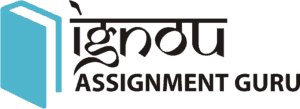MFN-001 Applied Physiology
Solved Assignment 2021-2022
TMA-1
Applied Physiology
Course Code: MFN-001
Assignment Code: MFN-001/AST-1/TMA-1 /21-22
Last Date of Submission: 15th November, 2021
| Title Name |
MFN-001 Solved Assignment 2021-2022 |
| University | IGNOU |
| Service Type | Solved Assignment (Soft copy/PDF) |
| Course | Master of Science in Dietetics and Food Service Management |
| Language | ENGLISH |
| Semester | 2021-2022 Course: M.Sc. (DFSM) |
| Session | July 2021 session |
| Short Name | MFN-001 |
| Assignment Code | MFN-001/AST-1/TMA-1 /21-22 |
| Product | Assignment of M.Sc. (DFSM) 2021-2022 (IGNOU) |
Maximum Marks: 100
This assignment is based on Units 1 -12 of the MFN-001 Course.
Section A -Descriptive Questions
There are ten questions in this part. Answer all questions.
(80 marks)
1. a) Differentiate between eukaryotic cells and prokaryotic cells. Draw and label their
structure.
b) What do you understand by the term ‘cardiac cycle’?
(6)
(2)
2. a) What do you understand by ‘intracellular fluid and extracellular fluid’? Give
example of both.
b) What is Cell Mediated Immune System (CMIS)? Briefly describe the mode of
action of CMIS.
(4)
(4)
3. a) What do you understand by the term endocrine gland? Enlist the major hormones
secreted by these glands.
b) Briefly discuss the parts of the brain referred to as the emotional brain.
(4)
(4)
4. a) Briefly discussed the types of artificial kidney dialysis.
b) What do you understand by the term GFR? What are the factors affecting GFR?
(4)
(4)
5. a) Give the composition and functions of:
(i) Gastric juice
(ii) Pancreatic juice
b) Briefly discuss the role of placenta and list the hormones produce by it.
(2+2)
(4)
6. a) List the different organs involved in taste perception and explain the mechanism of
taste perception.
b) Briefly explain how the neurons communicate with each other.
(4)
(4)
7. a) List the two major hormones secreted by each of the following glands and explain
their physiological effect:
(i)Anterior Pituitary
(ii)Adrenal Gland
b) What are the important functions of liver? Illustrate the structure of liver.
(2+2)
(4)
8. a) What is the difference between active and passive transport? Name the types of
both the transport.
b) Graphically illustrate the organs involved in respiration and describe the
mechanism of respiration
(4)
(4)
9. a) Briefly explain the mechanisms of circulation of blood in our body.
b) Differentiate between mitosis and meiosis.
(4)
(4)
10. a) What do you understand by the terms ‘Rh incompatibility’ and ‘Erythroblastosis
foetalis’. Discuss why the risk of Rh incompatibility increases with more number of
pregnancies.
b) Name three pairs of salivary glands.
c) What do you understand by the term blood pressure? How is it measured?
(4)
(2)
(2)
Section B – OTQ (Objective Type Questions) (20 marks)
1. a) Define the following: (5)
i) Megaloblastic Anemia
ii) TNF
iii) Diabetes Insipidus
iv) Respiratory acidosis
v) Lymphocytes
b) Give the functions/role of the following structure/organs in our today: (10)
i) Pineal gland
ii) Cochlea
iii) Urethra
iv) Large intestine
v) Cholecystokinin-pancreozymin(CCK-PZ)
vi) Pyloric orfice
vii) Lungs
viii) Bundle of His
ix) Major Histocompatability complex (MHC)
x) Platelets
b) Match the following (5)
i) George Whipple a) Serous cells
ii) Parotid Gland b) Relationship between diet and hemoglobin
iii) Submandibular Gland c) Mired Cells
iv) Tongue d) Circumvallate papillae
v) Dwarfism e) Deficiency of GH
MFN-001, MFN001, MFN 001, MFN-01, MFN01, MFN 01, MFN-1, MFN1, MFN 1


